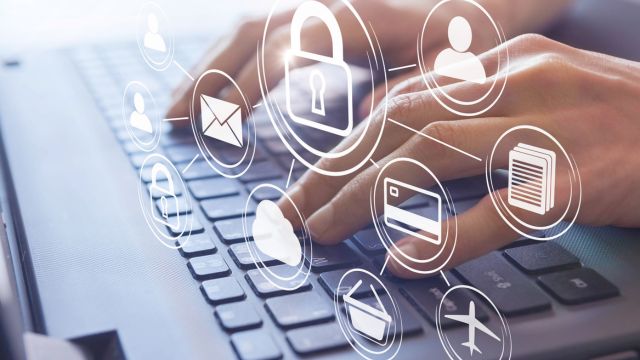Building a Security-First Culture: Empowering Employees to Protect Your Data

Published: 30 January 2025
In today’s interconnected world, data is the lifeblood of any organization. It fuels innovation, drives decision-making, and connects businesses with their customers. However, this valuable asset is also a prime target for cybercriminals. While sophisticated security technologies play a crucial role in protecting your data, they are not a silver bullet. A robust security posture requires more than just firewalls and intrusion detection systems. It demands a fundamental shift in mindset, a transformation into a security-first culture where every employee understands their role in safeguarding sensitive information. At Aqon, we believe that empowering your employees is the cornerstone of a comprehensive cybersecurity strategy.
Building a security-first culture is not about implementing a top-down mandate. It’s about fostering a shared understanding of the risks and responsibilities associated with data security. It’s about creating an environment where security is not seen as a burden but as an integral part of everyone’s job. This requires a multi-faceted approach that encompasses education, awareness, and ongoing reinforcement.
The first step in building a security-first culture is education. Employees need to understand the evolving threat landscape and the potential consequences of a data breach. They need to be aware of the common tactics used by cybercriminals, such as phishing, malware, and social engineering. Training programs should go beyond simply explaining the technical aspects of security. They should focus on real-world scenarios and provide employees with practical tips for identifying and responding to potential threats. For example, employees should be trained to recognize suspicious emails, avoid clicking on unknown links, and report any unusual activity. They should also understand the importance of strong passwords and multi-factor authentication. Regular refreshers and updates are crucial to keep employees informed about the latest threats and best practices.
Beyond formal training, fostering a security-first culture requires ongoing awareness campaigns. These campaigns can take many forms, from regular newsletters and intranet articles to interactive quizzes and simulated phishing exercises. The goal is to keep security top of mind and reinforce the importance of vigilance. Awareness campaigns should be tailored to the specific needs of the organization and should address the most relevant threats. For instance, if the organization handles sensitive customer data, the campaigns might focus on the importance of data privacy and compliance with relevant regulations. If employees frequently travel, the campaigns might emphasize the risks of using public Wi-Fi networks and the importance of securing mobile devices.
Creating a culture of open communication is essential for effective security. Employees should feel comfortable reporting any suspicious activity, no matter how small or insignificant it may seem. A “see something, say something” approach can be instrumental in preventing data breaches. Organizations should establish clear reporting procedures and ensure that employees know how to escalate security concerns. It’s also important to create a culture where employees are not afraid to admit mistakes. Everyone makes mistakes, and sometimes those mistakes can have security implications. Rather than punishing employees for errors, organizations should focus on learning from them and implementing measures to prevent similar incidents from happening again.
In addition to education and awareness, building a security-first culture requires clear policies and procedures. These policies should outline the organization’s expectations regarding data security and should provide employees with clear guidelines for handling sensitive information. Policies should cover a wide range of topics, including password management, data access, device security, and incident response. It’s crucial that these policies are not just written documents but are actively enforced and communicated to all employees. Regular audits and reviews can help ensure that policies are up-to-date and effective.
Empowering employees also means giving them the tools and resources they need to protect data. This might include providing them with secure devices, software, and access controls. It also means ensuring that they have the support they need to address security concerns. For example, if an employee receives a suspicious email, they should know who to contact for assistance. Organizations should establish a dedicated security team or appoint a security champion who can provide guidance and support to employees.
Building a security-first culture is an ongoing process, not a one-time event. It requires continuous effort and commitment from leadership and employees alike. It’s important to regularly assess the effectiveness of security initiatives and make adjustments as needed. This might involve conducting regular security audits, gathering feedback from employees, and staying up-to-date on the latest threats and best practices.
At Aqon, we understand the complexities of building a security-first culture. We have extensive experience in helping organizations develop and implement comprehensive cybersecurity strategies. Our team of experts can work with you to assess your current security posture, identify vulnerabilities, and develop a tailored plan to empower your employees and protect your data. We can provide training programs, awareness campaigns, and policy development services to help you create a culture of security consciousness. Don’t wait until it’s too late. Contact Aqon today for more information on how we can help you build a security-first culture and safeguard your valuable data. Let us partner with you to create a resilient and secure organization.
Latest Articles



